When I discovered that, at one time, the London Bridge authorities employed a Keeper of the Heads I was inspired to write about the many reincarnations of London Bridge since the Romans built the first crossing about AD 50. The relationship between the bridges and London is fascinating and so I want to do it justice with two blogs.
There is an artist’s impression of Roman London, including the bridge, on display at the Guildhall Art Gallery …
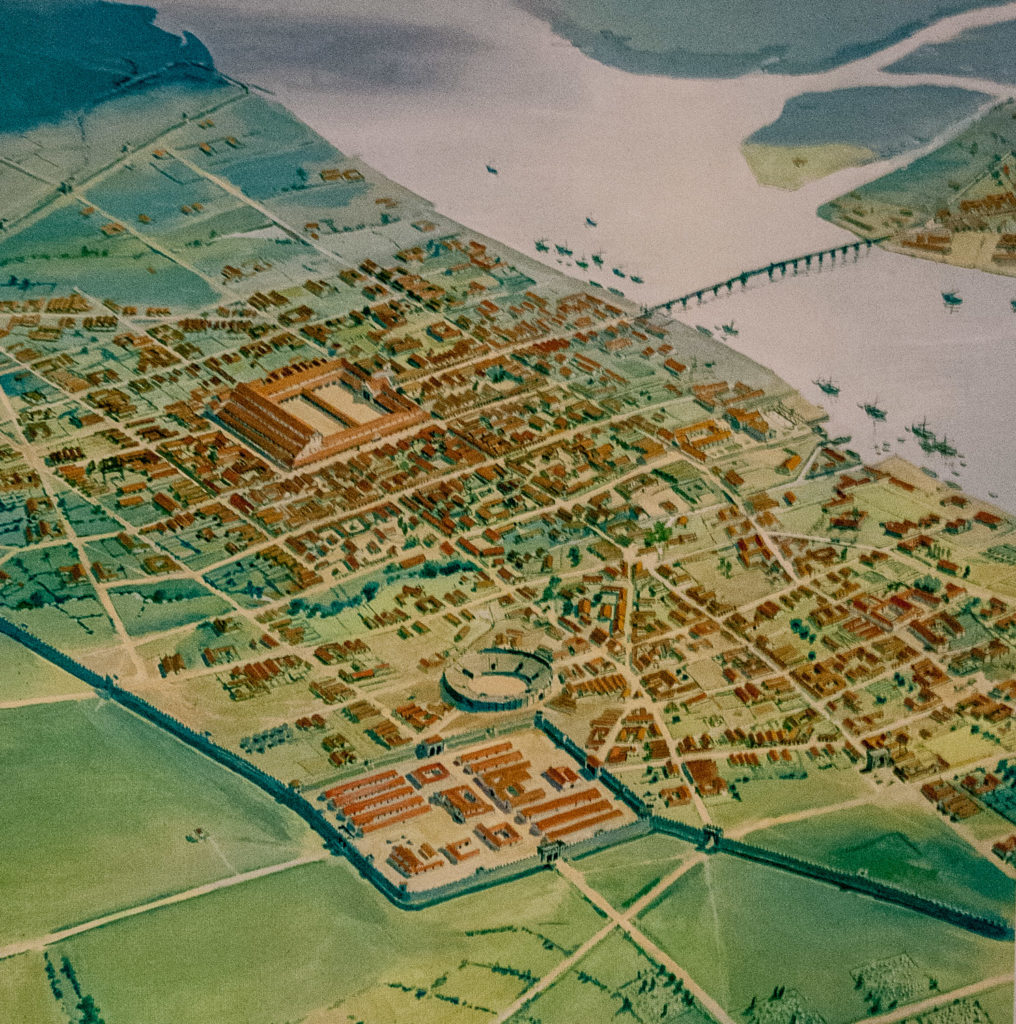
The picture reflects the fact that the river was very much wider then (about five times what we see today) and consequently much shallower. The bridge was probably built of oak and, being the only fixed crossing below Staines, it became a major contributor to the prosperity of London which soon replaced Colchester as the Roman capital.
The earliest written reference to the bridge (Lundene brigce) appears in the Anglo-Saxon Chronicle of AD 984 when mention is made of a woman being taken there to be drowned for witchcraft. From 1176 a new stone bridge was constructed under the leadership of a cleric, Peter of Colechurch, and was to last for well over 600 years.
This painting by Samuel Scott (1702-1772) gives some idea of what the bridge looked like around the middle of the 18th century. People in the houses had a magnificent view and could fish from their windows as the buildings overhung the water by several feet. In the mid-1750s, the naturalist Thomas Pennant also observed that …
People living on the Bridge soon grew deaf to the noise of the falling waters, the clamours of the watermen, or the frequent shrieks of drowning wretches.
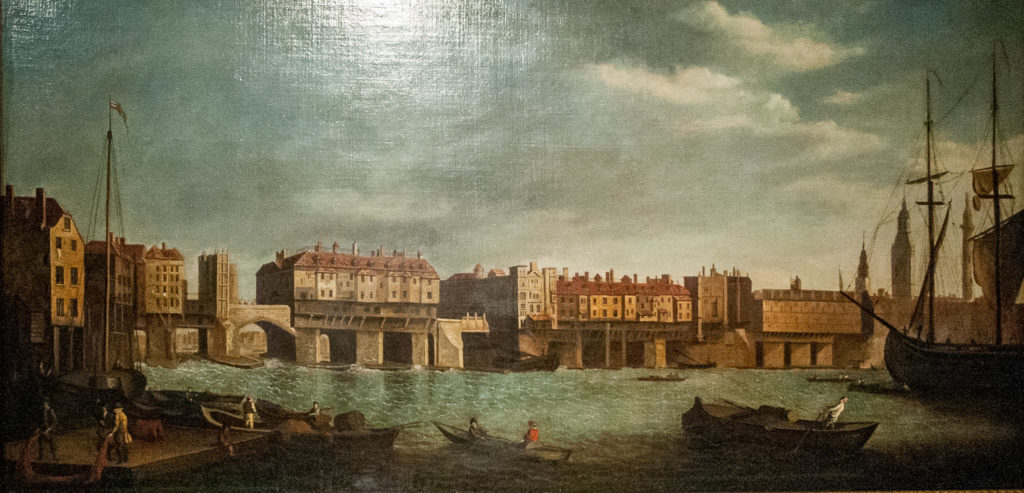
Do pop into St Magnus-the-Martyr on Lower Thames Street (EC3R 6DN) and have a look at this splendid model of the Bridge (a photo really doesn’t do it justice) …
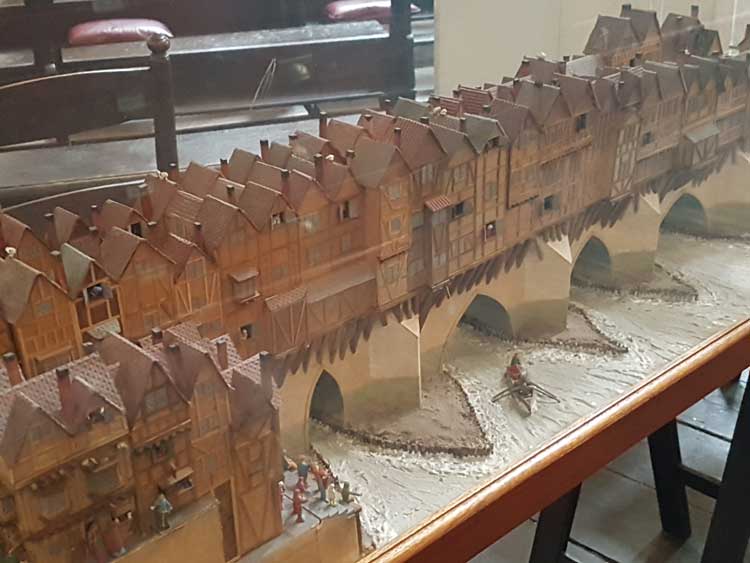
The bridge was supported by 18 boat-shaped ‘starlings’. These effectively blocked half the river and tidal surges and the build up of waste made the current notoriously uneven. The drop in water level could be as much as eight feet and navigating the arches was known as ‘shooting the bridge’. Wary passengers would alight on one side and be picked up by their boat on the other – assuming their waterman had not drowned, which many of them did, hence the 1670 saying …
London Bridge was made for wise men to pass over, and fools to pass under.
Such was the proliferation of buildings, people crossing the bridge for the first time (which could take an hour) often did not realise they were not in a normal street. At some points it was only twelve feet wide.
I have to mention the heads.
Beheading was a common form of execution at the time and reserved for higher-born individuals since it was swifter and less barbaric than hanging or burning at the stake. Heads also became available when individuals suffered the terrible death of being hanged, drawn and quartered (usually for high treason).
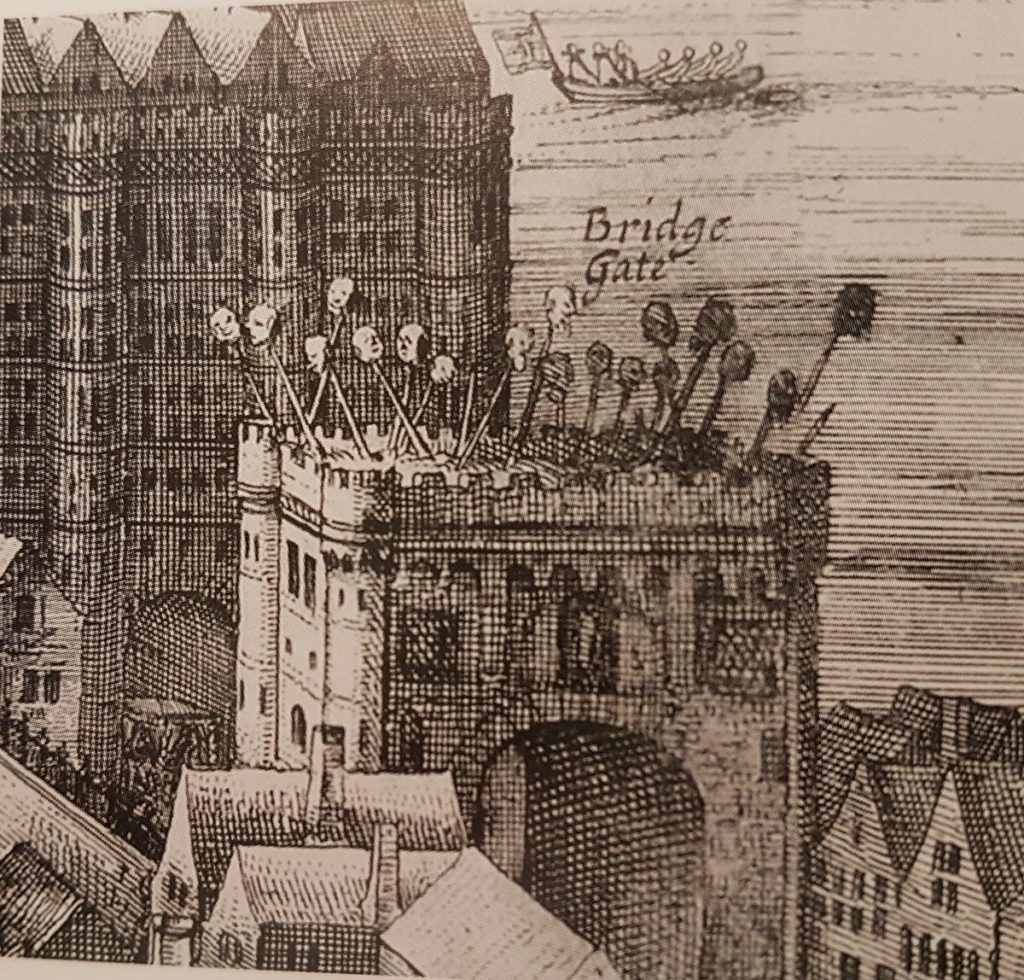
Between 1305 when the first head was placed atop a pike over the Drawbridge Gate, and 1678 when the practice was stopped, there was a near-permanent display of decapitated heads grinning down from their spikes that pedestrians would have passed beneath. There was a plentiful supply, a visitor in 1592 counted 34 ‘heads of persons of distinction’.
The first head to be displayed in this way was the Scottish patriot and rebel William Wallace in 1305 after he had been hanged, drawn and quartered at Smithfield. The Bridge authorities employed a Keeper of the Heads who maintained security since relatives of the deceased were often desperate to reclaim the head in order that it could be reunited with the body (thereby restoring the immortal soul). When the flesh had rotted away the Keeper usually tossed the skull into the river.
I am indebted to the historian Heidi Nichols for her research – read her full article here.
The width of the river, its slow current, and the obstruction caused by London Bridge all contributed to the river frequently freezing over for two months at a time. This enabled the famous Thames Frost Fairs whose heyday was during the Little Ice Age between the 17th and early 19th Century (although the river had frozen before – Henry VIII travelled the river from Westminster to Greenwich by sleigh in 1536).
This picture, The Thames During the Great Frost of 1739, shows the Frost Fair in the foreground and figures inspecting the incomplete piers of Westminster Bridge on the right. In the distance is a view of the City of London including St Paul’s Cathedral and spires of the City churches …
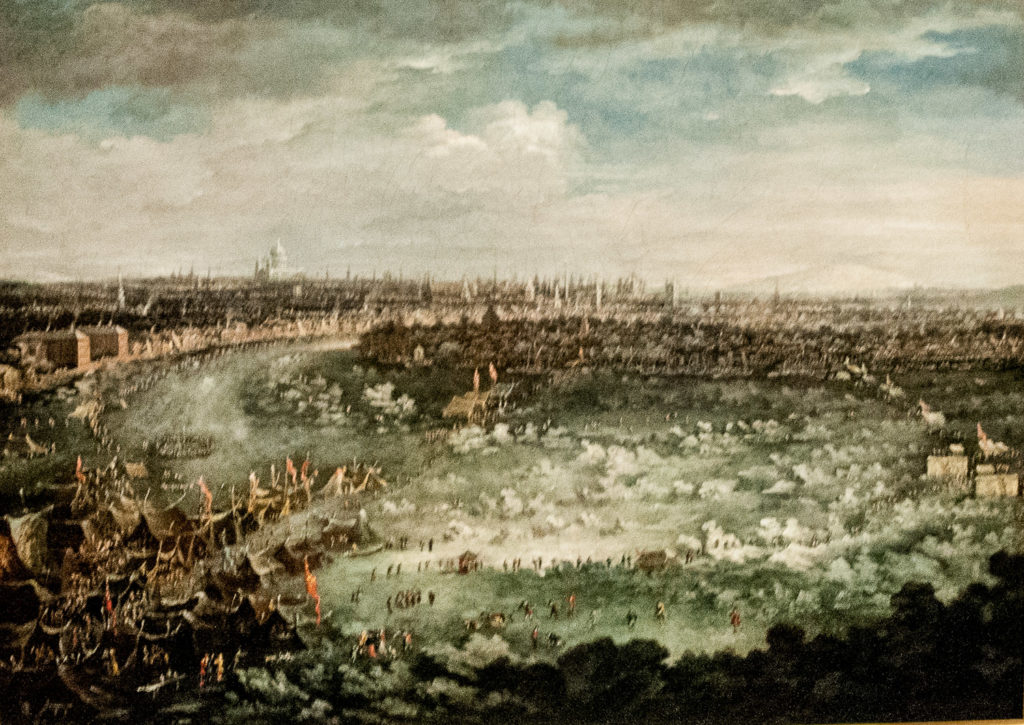
Between 1607 and 1814 there were a total of seven major fairs. There were football pitches, bowling matches, fruit-sellers, shoemakers, barbers… even a pub or two. To keep the shopkeepers warm, there were even fires within their tents. During the four days of the final 1814 Fair an elephant was led across the river below Blackfriars Bridge.
A Frost Fair in full swing (from the Londonist blog) …

The fairs ended as the weather became warmer and their possibility finally eliminated when the old London Bridge was demolished in 1831.

I will write about the bridges that subsequently replaced it next week.
In the meantime, if you visit St Magnus, pause outside for a few minutes. Firstly, you will be standing on the pedestrian approach to the old bridge …
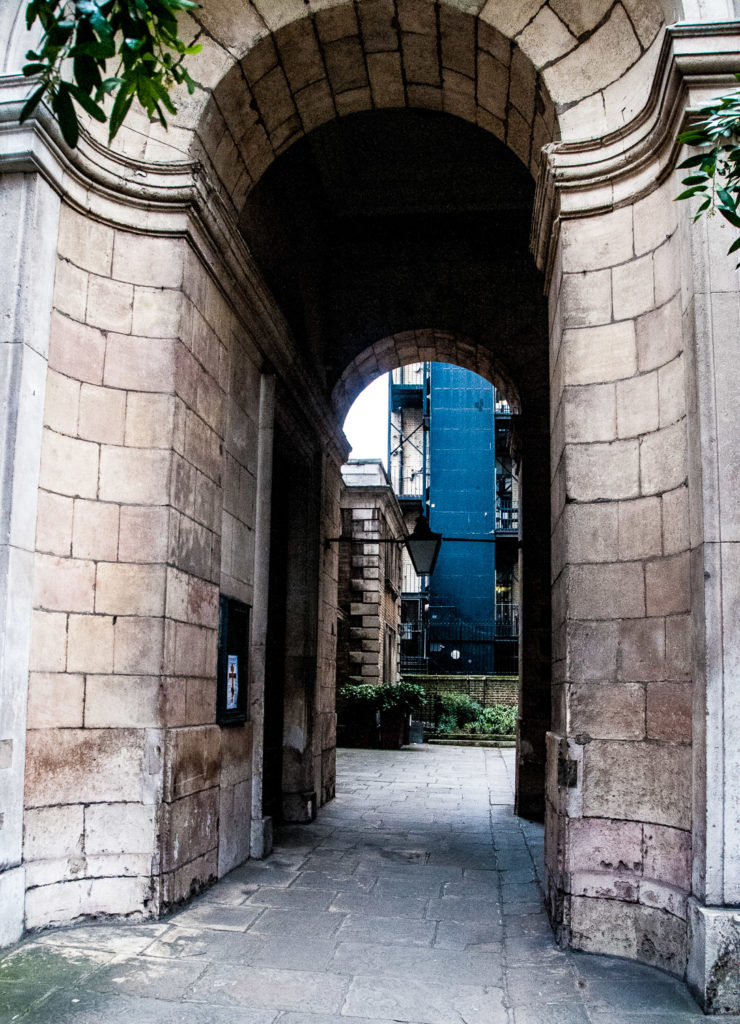
And under the arch you will see this piece of wood …
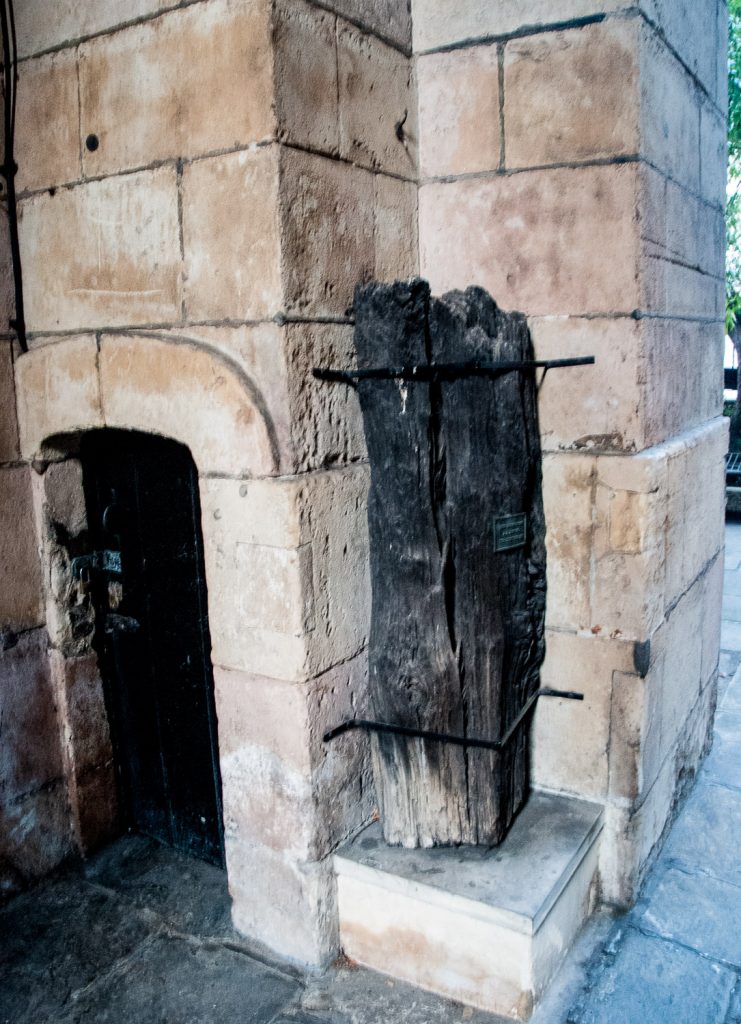
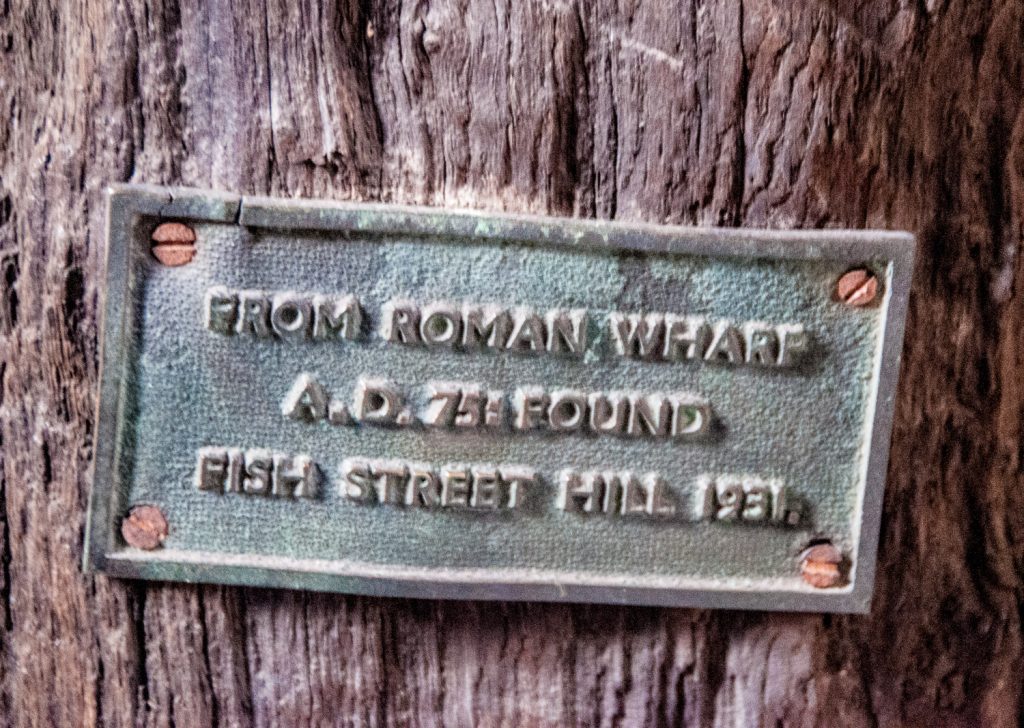
Two remnants of the medieval bridge sit within the church gardens; originally part of the bridge’s northern archway, these stones now lie unmarked …
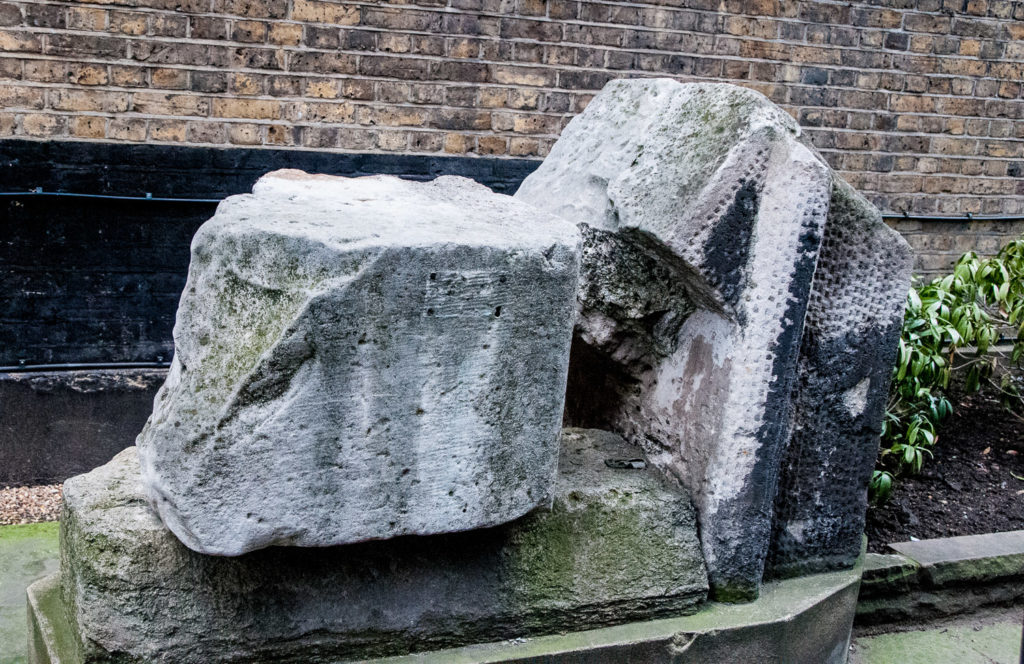
My next blog about the bridges will take us up to the present day.
